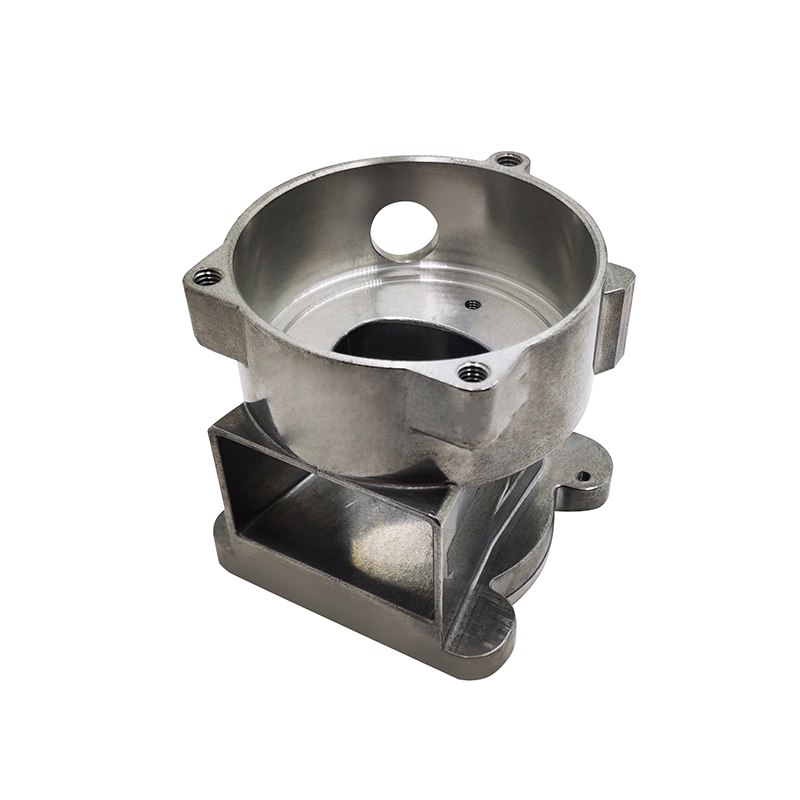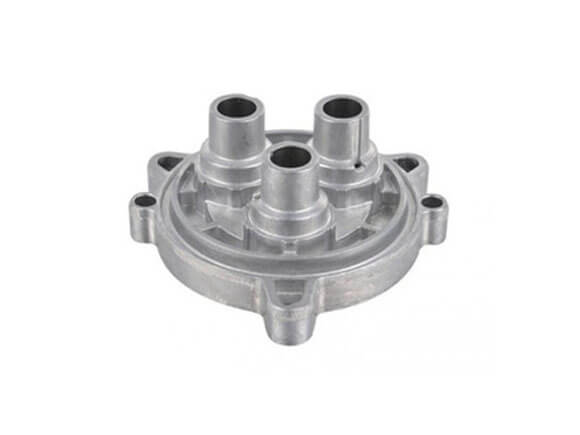How Aluminum Foundry Powers Sustainable and Eco-Friendly Manufacturing
Aluminum Casting Explained: Key Facts and Insights for Market Professionals
Aluminum casting works as a crucial process in modern production, shaping elements across numerous markets. Its varied approaches, such as sand and die casting, accommodate different production demands. The special residential or commercial properties of aluminum alloys boost their applicability, yet challenges remain in preserving top quality and efficiency. Understanding these facets is vital for sector experts. What are the most up to date developments and ideal practices that can additionally maximize this process?
Review of Aluminum Casting Processes

Crucial element of aluminum casting processes consist of the preparation of molds, which might be made from sand, metal, or ceramic products, depending on the planned use. Additionally, temperature level control is important to ensure proper melting and solidification of aluminum.
The casting procedure permits complex layouts and can attain high degrees of dimensional accuracy. When cooled down, the castings may go through completing procedures such as machining or surface treatment to fulfill certain efficiency requirements. Overall, aluminum casting works as a versatile manufacturing technique, successfully fulfilling the diverse needs of numerous sectors.
Kinds Of Aluminum Casting Methods
In the domain name of aluminum casting, different methods are used to achieve various results. Sand casting strategies offer adaptability and cost-effectiveness for complicated shapes, while die casting procedures offer high accuracy and effectiveness for automation. Understanding these techniques is essential for selecting the ideal approach based upon task requirements.
Sand Casting Methods
Sand casting methods stand for a fundamental method in aluminum casting, where sand is made use of as a mold and mildew material to shape liquified steel. This process entails producing a pattern from the desired part, which is after that placed in a sand blend to create a mold. The sand is compacted around the pattern, and after elimination, it develops a cavity in the shape of the component. Molten aluminum is put into this dental caries, allowing it to cool and strengthen. One considerable benefit of sand casting is its versatility; it can fit complicated forms and huge elements. Furthermore, the products used are fairly low-cost, making it an accessible choice for various production applications in the aluminum industry.
Die Casting Processes
Die casting processes are a famous technique for shaping aluminum elements, making use of high-pressure techniques to require liquified metal into precisely engineered molds. This procedure is specifically preferred for its ability to create intricate shapes with limited tolerances and a smooth finish. There are two primary types of die casting: hot chamber and cool chamber. Warm chamber die casting appropriates for metals with reduced melting factors, permitting faster production rates. Conversely, cold chamber die casting is optimal for higher melting point steels, needing a separate melting furnace. Both methods enhance performance and reduce product waste, making them essential in automotive, aerospace, and customer items sectors. Comprehending these processes helps specialists choose one of the most proper technique for their specific applications.
Product Residence of Aluminum Alloys

Stamina and Sturdiness
Toughness and durability are vital features of aluminum alloys that make them suitable for numerous casting applications. These materials exhibit a desirable strength-to-weight proportion, enabling the development of lightweight yet durable elements. With regard to tensile strength, particular aluminum alloys can be engineered to stand up to substantial lots without flawing. This residential or commercial property is especially crucial in sectors such as aerospace and automotive, where performance and safety are paramount. Additionally, aluminum alloys frequently keep their mechanical buildings under varied temperature level problems, guaranteeing regular performance. The inherent ductility of these alloys also permits reliable shaping during the casting process, making it much easier to generate complicated geometries. Overall, the toughness and resilience of aluminum alloys add considerably to their prevalent use in innovative applications.
Rust Resistance Characteristics
While aluminum alloys are valued for their stamina and lightweight homes, their rust resistance is an additional crucial characteristic that boosts their viability for numerous applications. Aluminum normally creates a protective oxide layer when exposed to dampness, which assists to avoid further oxidation. This inherent residential or commercial property makes aluminum alloys specifically useful in environments susceptible to rust, such as marine and commercial settings. Furthermore, various alloy structures can affect resistance levels, with certain alloys specifically crafted to enhance this particular. Therapies like anodizing can better enhance corrosion resistance by enlarging the oxide layer. Consequently, recognizing the corrosion resistance of aluminum alloys is essential for market specialists when selecting products for projects calling for resilience and long life in challenging atmospheres.
Advantages of Aluminum Casting in Production
Aluminum casting offers countless benefits in manufacturing, making it a favored selection for numerous industries. One considerable advantage is its light-weight nature, which adds to minimized transport prices and improved energy effectiveness in final product. Aluminum's exceptional thermal and electric conductivity improves performance in applications needing warmth dissipation or electric transmission.
The material's ability to be cast into complex forms enables advice layout flexibility, lowering the need for additional machining procedures. On top of that, aluminum casting shows premium deterioration resistance, bring about longer item lifespans and reduced maintenance prices.

Common Applications of Aluminum Castings
The versatility of aluminum casting enables its prevalent usage across different markets. Usual applications include automotive parts, where lightweight and corrosion-resistant parts, such as engine blocks and transmission real estates, improve vehicle efficiency. In the aerospace sector, aluminum spreadings are made use of for architectural parts, offering toughness without adding significant weight.
Additionally, the electrical market benefits from aluminum spreadings in making rooms and heat sinks, where thermal conductivity is essential. The durable goods sector additionally includes aluminum spreadings in items like cooking equipment, furniture, and decorative items, combining aesthetics with performance.
Additionally, the building and construction sector uses aluminum spreadings for building components, home window structures, and components, which give resilience and design flexibility. On the whole, the varied applications of aluminum spreadings highlight their importance in contemporary manufacturing, adding to developments in performance and product layout throughout several areas.
Technologies and Technological Improvements
As industries proceed to develop, innovations in aluminum casting modern technology are changing manufacturing processes and item capabilities. Advancements in 3D printing and additive production have actually made it possible for the production of complex geometries that were previously impossible to attain with conventional approaches. These modern technologies enable for rapid prototyping, minimizing lead times and expenses.
Furthermore, improvements in mold and mildew style and products have boosted the casting process by raising effectiveness and decreasing waste. The combination of wise production methods, such as IoT devices and real-time information analytics, enables much better monitoring and optimization of production criteria, causing higher high quality outcomes.
Furthermore, advancements in aluminum alloys give enhanced stamina, deterioration resistance, and lightweight properties, accommodating the expanding demands in aerospace and auto industries. Collectively, these developments are not just boosting performance but also satisfying the extensive criteria of modern design applications.
Best Practices for Quality Assurance in Aluminum Casting
Guaranteeing top notch results in aluminum casting calls for adherence to ideal practices that incorporate numerous phases of the manufacturing procedure. Complete product assessment is necessary to validate the quality of aluminum alloys used, as impurities can greatly influence the last item. Carrying out accurate melting and pouring techniques decreases issues; preserving optimal temperatures prevents oxidation and advertises uniformity.
Moreover, mold and mildew style plays a crucial duty; making use of computer-aided layout (CAD) can improve accuracy check that and lower human mistake. Regular surveillance of the cooling procedure is vital to stay clear of warping and contraction. Additionally, using non-destructive screening approaches, such as ultrasonic or X-ray examinations, helps determine interior problems without harming the parts.
Establishing a comments loophole with drivers and engineers cultivates continuous enhancement, making certain that quality control measures develop along with technological developments. By complying with these best practices, producers can improve the reliability and efficiency of aluminum castings.
Frequently Asked Concerns
What Are the Ecological Impacts of Aluminum Casting?
The ecological impacts of aluminum casting include substantial power consumption, greenhouse gas discharges, and possible water air pollution from foundry operations. Additionally, bauxite mining for aluminum ore can lead to environment devastation and soil degradation.
How Does Aluminum Casting Compare to Other Metal Casting Procedures?
Aluminum casting usually uses benefits in light-weight parts and rust resistance contrasted to other processes, such as iron or steel casting, which may offer greater strength but result in much heavier and much less corrosion-resistant items. - Aluminum Casting Company
What Prevail Issues in Aluminum Castings and Their Reasons?
Usual issues in aluminum spreadings consist of porosity, shrinkage, and inclusions. Causes usually stem from incorrect pouring techniques, inadequate mold layout, or contamination of the molten steel, impacting the last product's stability and performance.
What Safety Precautions Should Be Taken Throughout Aluminum Casting?
During aluminum casting, important safety and security preventative measures include wearing safety gear, guaranteeing appropriate ventilation, keeping a clean workspace, taking care of liquified metal with treatment, and adhering to well-known methods to reduce threats of burns, inhalation hazards, and crashes.
Exactly How Can I Enhance the Efficiency of My Aluminum Casting Operations?
To boost efficiency in aluminum casting operations, one must optimize mold and mildew style, improve product handling, use automated processes, carry out regular upkeep on equipment, and purchase worker training to boost skills and productivity.
Numerous approaches exist, aluminum straight from the source casting incorporates numerous key procedures that cater to various applications and demands. Secret elements of aluminum casting processes consist of the preparation of mold and mildews, which may be made from sand, metal, or ceramic materials, depending on the planned usage. Sand casting techniques represent a basic approach in aluminum casting, where sand is used as a mold and mildew material to shape molten steel. As sectors proceed to develop, innovations in aluminum casting innovation are changing manufacturing procedures and product abilities. Making certain premium outcomes in aluminum casting calls for adherence to ideal practices that encompass various phases of the manufacturing process.